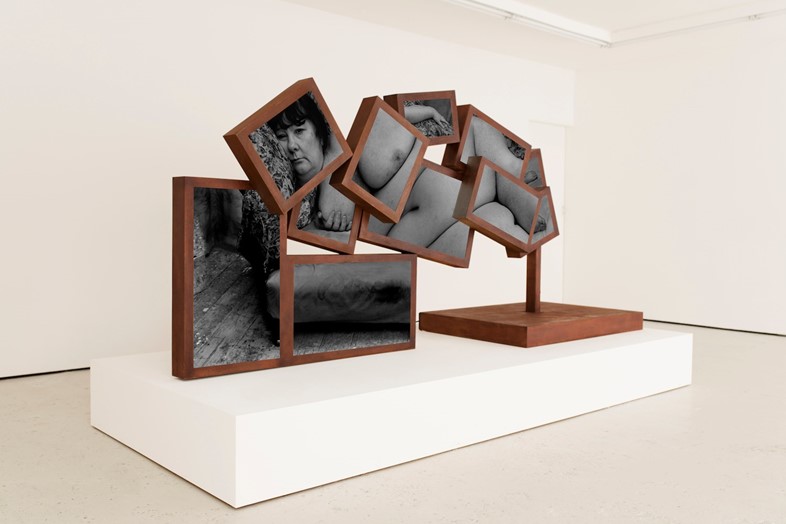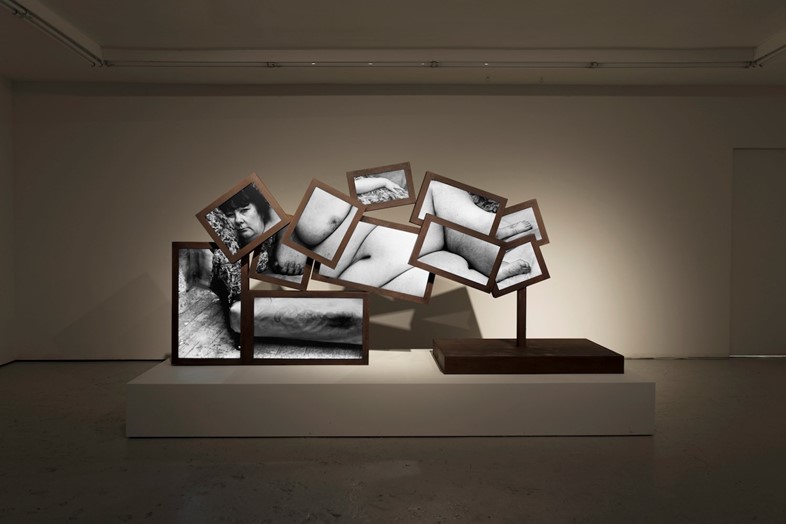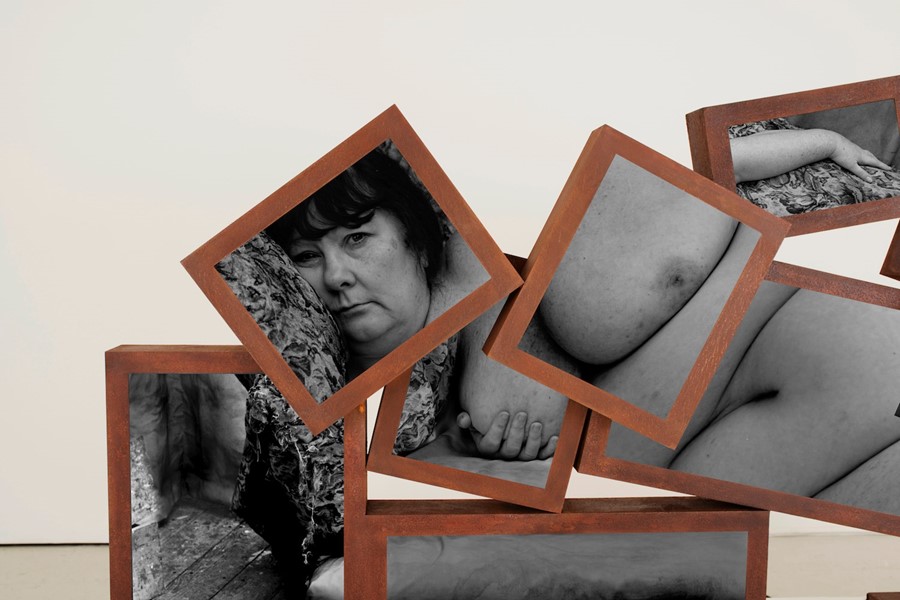Charlotte Colbert’s new work seeks to re-frame Sue Tilley, the subject of Freud’s Benefit Supervisor series, from objectified to objectifier
Benefit Supervisor Sleeping is amongst the most famous portraits by the late Lucian Freud. One of a series of four paintings of his muse-in-local-government-employ Sue Tilley, it sold for £35 million one decade ago – a somewhat ironic signifier of the excesses of the post-capitalist era, given both its title and subject. It’s a painting that radically challenged the medium of portraiture in its time, and has always held a special fascination for the renowned image-maker and contemporary artist Charlotte Colbert, who has chosen to reframe its infamous subject, one body-part at a time, for a whole new generation via a 170kg video installation at Shoreditch’s Unit 9 Gallery. In this rusted, wrought metal 21st-century version of the seminal portrait, Colbert addresses the strange interplay of projection, intimacy and representation across the passage of time that is arguably at the core of all portraiture, and seeks to reclaim the subject herself from the role of passive muse. Here, the artist speaks exclusively to AnOther about the struggle to find one’s true identity, and tells us why we so often spend entire lifetimes trying to untangle ourselves, from ourselves.

On the parallels between psychoanalysis and portraiture...
“I’ve always had a huge fascination with psychoanalysis and it has informed a large part of my practice. I wrote an entire script on Lou Andreas Salome – a great friend of Sigmund Freud’s and one of the first women psychoanalysts. What I found so interesting in re-staging Sue 20 years later within Lucian’s original studio was the predominance of the couch within the original painting, and within Lucian’s body of work as a whole, with even a similar pattern and texture to that of Sigmund Freud’s. It made me think about therapy as portraiture, portraiture as therapy, the space between the artist and the muse, the therapist and the patient. With both, the immediacy is diverted by the object between them – the canvas, and the couch. And, especially in the case of early psychoanalysis, the case study often revealed the therapist as much as the patient, just like portraiture often reveals more about the painter than the painted. The relationship between Sigmund and Lucian hadn’t really struck me prior to this project, but even their approach to subject strikes me as similar– both seek a cold scientific truth.”
On Sue Tilley and the role of the muse...
“I was interested in a 21st-century take on the Benefit Supervisor series – re-creating ‘the nude’, in a screen construction that lulls the viewer into a sense of familiarity and comfort, until, suddenly, Sue’s eyes open. She is no longer the object of the gaze but the subject of it, staring unflinchingly at the viewer, turning the tables, judging us, objectifying us. Sue has obviously been defined by this painting of her, through which she has become well known. The role of the muse is always entrapping, it exists within the realm of projection and fantasy. In my piece, Sue opens her eyes, and in that moment, she is no longer The Benefit Supervisor Sleeping – she becomes Sue Tilley. For this piece, the key, for me, was balancing weight and lightness. The piece weighs about 170kg but in some way, it feels floaty – the moving image adding a sense of air.

On the paradox of identity...
“The fragility of identity is always something I have struggled with. What defines who we are? Is there a core ‘me’ in everyone, or is it so perpetually in flux that it eludes consistency? In my late teens and early 20s I was quite ill and as the chemical balance of my body was altered, so was my sense of self. Was the notion of a self, of a core identity, so constantly romanticised in stories to give us the hope of relevance, necessary, as Sontag suggests, to provide us with the feeling of existence? For my screen sculptures I abstract people, like one would in a cubist painting, by filming them in sections. I then encase these breathing, moving parts, into the heaviest material – steel metal rusted into immobility. Its fractured feel captures how I experience our relationship to the world, bitty and broken. The quest for wholeness being just that – a quest, bits of soul fluttering and trapped into the unforgiving tick of time.”
On photography and the passage of time...
“The other day, I found a bunch of old photographs from my primary school days. I was always capturing moments – someone’s hair being pulled in the playground, a hand, a scabby knee. I’ve always had a strange relationship with time. I don’t have a sense of it at all. So maybe that was an intuitive way of trying to freeze it, to stop the moment to try to make sense of it. That has evolved from a somewhat documentarian approach to a more staged one, as if the only way to see something, to somehow touch its truth, were with the distance of time and fiction. I love that scene in Guy Maddin’s psychological documentary My Winnipeg, where he re-stages an argument he had with his parents using actors, revisiting the events with the necessary distance to try to understand everyone’s point of view and, as a result, understand it in a new light. I’m not sure about what that says about my sense of place in the world, except perhaps that we are like knots, spending a lifetime trying to untangle ourselves.”
Benefit Supervisor Sleeping by Charlotte Colbert runs until February 18, 2018 at UNIT9, London.
